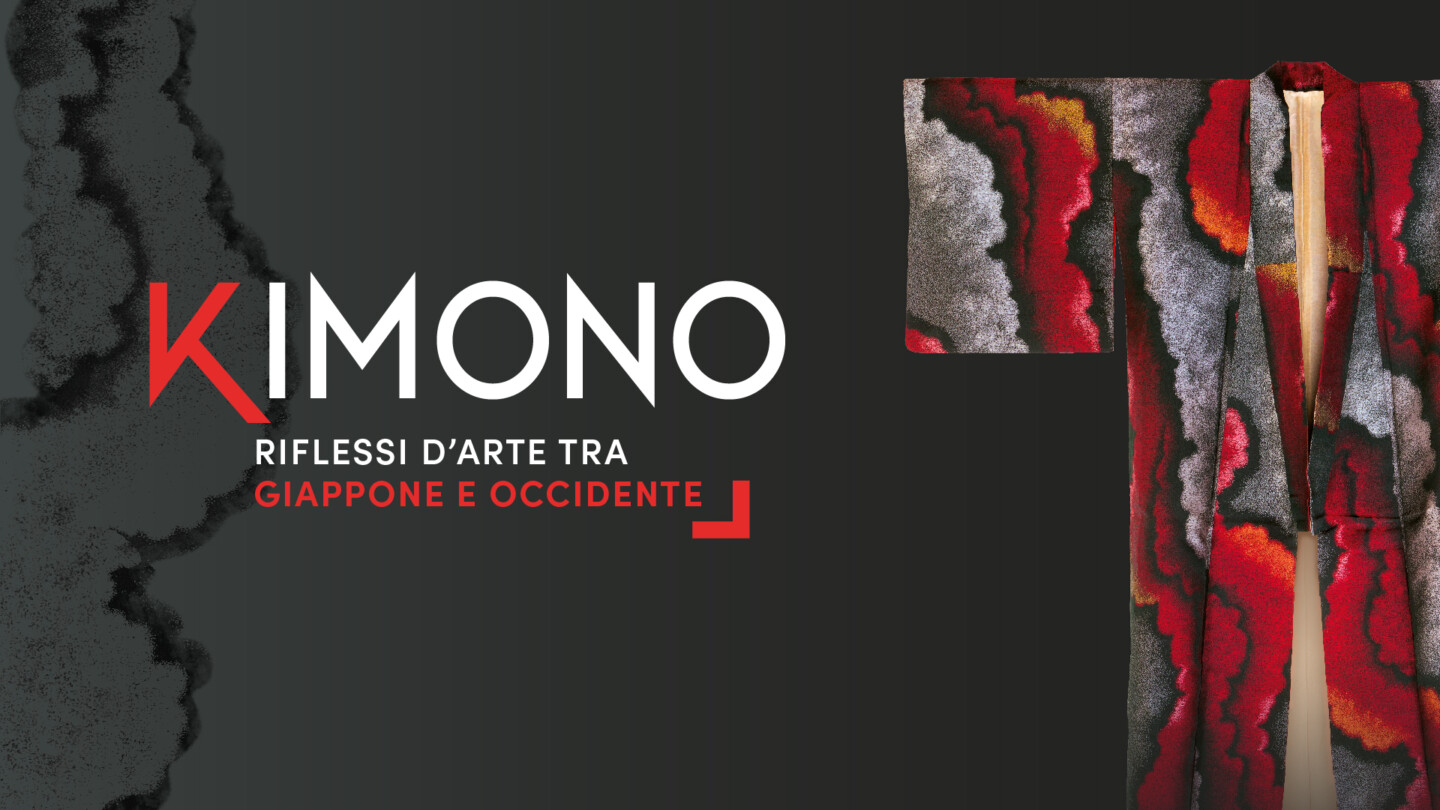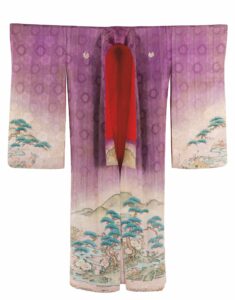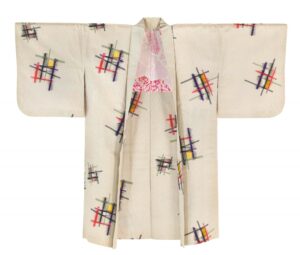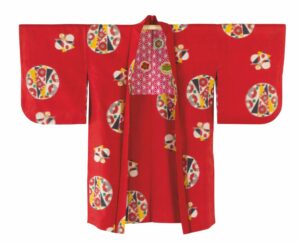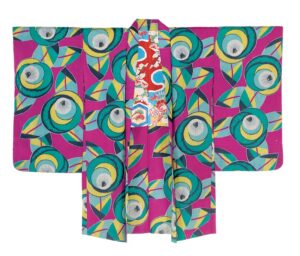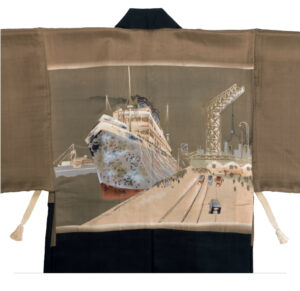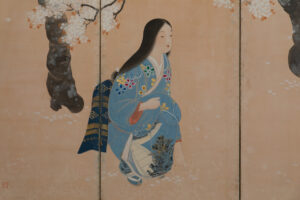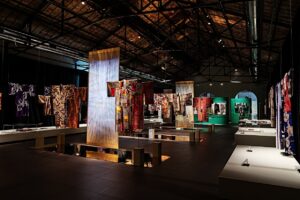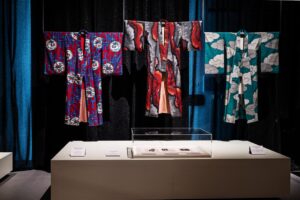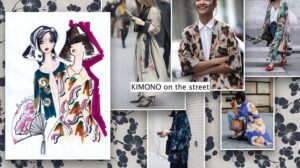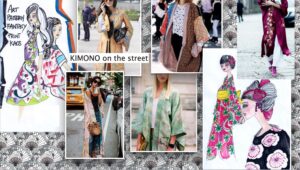Poster of the exhibition KIMONO – Reflections of art between Japan and the West
“Kaori” by Beatrice Brandini
From 29 April to 19 November, fifty kimonos belonging to the collection of Lydia Manavello will be on display, together with paintings, woodcuts, old postcards, prints and fabrics from important private collections and unpublished collections of the Prato Textile Museum.
Female kimono
KIMONO – Reflections of art between Japan and the West is the title of the new beautiful exhibition organized by the Textile Museum of Prato in collaboration with the Museum of Fashion and Applied Arts of Gorizia.
White kimono
The extraordinary kimonos that we will see on display can all be dated to the early twentieth century, undisputed witnesses of reciprocal contamination between Japan and the West, especially in the artistic-stylistic field.
Red kimono
On display are works by Hiroshige, Utamaro, Hokusai, artists who influenced Western culture in the twentieth century with a decorative and highly expressive language. But this exhibition also wants to tell, through its most iconic garment, the Kimono, the inverse path, or rather how the contamination between these two worlds took place in a transversal way, since Western culture also influenced the East.
Short overkimono
European avant-gardes such as Futurism and Cubism have modified the traditional Japanese decorative language, as can be seen from these extraordinary silk, embroidered or printed kimonos. In addition to the traditional Japanese motifs that adorn these highly refined garments, colorful designs are beginning to appear that recall precisely these European currents.
Men’s kimono
The phenomenon of Orientalism and Japonisme, i.e. the influence of Japanese arts on European ones, is widely known, but the opposite path is less known, the one that led some Japanese artists to assimilate Western forms and contents in their artistic production.
Japanese screen
Overview exhibition KIMONO – Reflections of art between Japan and the West Museo del Tessuto di Prato
The Kimono, with its iconic shape, long sleeves and wide belts at the waist, straight and soft lines, has today even become a streetwear garment, and, if it has lost its literal meaning over time (kimono = thing to wear), from always arouses an irresistible charm, where silk fabrics become works of art, paintings, where every detail tells both the social context from which it was born (worn), and, more broadly, the historical period to which it refers.
Streetwear mood Kimono by Beatrice Brandini
Lydia Manavello important kimono collector who started almost by chance, certainly out of immense passion, and who now generously shares her splendid collection in events like this, expressing not only art and beauty, but also culture and history.
As soon as possible I will visit this interesting exhibition and I will tell you about it in detail.
Good life to everyone!
Beatrice


